DECLARATION OF INDEPENDENCE]. In Congress, July 4, 1776. The Unanimous Declaration of the Thirteen United States of America. When in the Course of Human Events... [Washington, D.C.:] Engraved by W.I. Stone, for the Dep t. of State, by order of J.Q. Adams, Sec y. of State. July 4 1823. Folio broadside (30 1/16 x 24 7/8 in.), PRINTED ON FINE WHITE PARCHMENT, uniformly aged to a pale cream tone, AN UNUSUALLY FRESH COPY, showing very slight surface soil and a few small cracks in the parchment in lower portion of the sheet and a few small tears at extreme edges, all carefully repaired. Faded early ink presentation inscription in lower left-hand area. Archivally conserved, stretched and matted in a very fine, museum-quality giltwood frame. "WHEN IN THE COURSE OF HUMAN EVENTS": A FINE EXAMPLE OF THE ONLY OFFICIAL FACSIMILE OF THE DECLARATION OF INDEPENDENCE. ONE OF ABOUT 36 SURVIVING COPIES OF STONE'S 1823 ENGRAVING. Stone's meticulously prepared engraving of America's founding document constitutes by far the most accurate of existing facsimiles of the Declaration of Independence. It constitutes the only facsimile officially authorized by Congress and was printed at the request of Secretary of State John Quincy Adams, son of one of the most notable of the 56 original Signers. In addition, its imposing size--mirroring that of the engrossed parchment in the National Archives--befits the fundamental importance of the Declaration of Independence, a text that has become the defining statement of the American national identity, what Thomas Jefferson its principal author termed "an expression of the American mind," or as a recent scholar would have it, "American scripture" (Pauline Maier, American Scripture: Making the Declaration of Independence, 1997). In 1820, forty-four years after the Declaration of Independence was adopted by Congress and signed in Philadelphia by delegates to the Continental Congress, Secretary of State John Quincy Adams commissioned William J. Stone to execute a full-scale facsimile of the historic document, the original of which had already suffered severely from fading and wear during its vicissitudes since 1776 (see lot 371). The engraving of the exceptionally large copperplate, it is reported, took Stone a full three years, but the wet transfer process he may have employed "did indeed cause some physical harm to the parchment" of the original document (National Archives, Declaration of Independence: The Adventures of A Document , 1976, p.17.) Finally, on January 2, 1823, Adams formally notified the Senate that 200 copies had been printed, all on unusually large sheets of expensive parchment similar to that used in the 1776 engrossed original. Congress, in a Resolution of 26 May, directed that the completed engravings be distributed in honor of the 50th anniversary of the Declaration of Independence. The President (James Monroe) and Vice-President were each to receive two copies, two were allocated to former President James Madison, twenty to the two houses of Congress, two to each surviving Signer (Thomas Jefferson John Adams and Charles Carroll), and two copies to the Marquis de Lafayette, shortly to visit the nation whose independence he had helped to secure (one of Lafayette's copies was sold at Christie's, 22 November 1985, lot 194). The remaining copies, Congress directed, were to be given "to different Universities and Colleges as the President may direct." Very few copies of this expensively produced facsimile remain today in private hands. In 1991, 31 surviving copies were recorded, 19 in institutions and twelve privately owned. Subsequent work by Dr. William Coleman has enumerated an additional five copies, raising the total number of extant copies to 36. J. Bidwell, "American History in Image and Text," in Proceedings of the American Antiquarian Society , vol.98, part 2 (October 1988), no.7; W.R. Coleman, "Counting the Stones--A Census of the Stone Facsimiles of the Declaration of Independence
DECLARATION OF INDEPENDENCE]. In Congress, July 4, 1776. The Unanimous Declaration of the Thirteen United States of America. When in the Course of Human Events... [Washington, D.C.:] Engraved by W.I. Stone, for the Dep t. of State, by order of J.Q. Adams, Sec y. of State. July 4 1823. Folio broadside (30 1/16 x 24 7/8 in.), PRINTED ON FINE WHITE PARCHMENT, uniformly aged to a pale cream tone, AN UNUSUALLY FRESH COPY, showing very slight surface soil and a few small cracks in the parchment in lower portion of the sheet and a few small tears at extreme edges, all carefully repaired. Faded early ink presentation inscription in lower left-hand area. Archivally conserved, stretched and matted in a very fine, museum-quality giltwood frame. "WHEN IN THE COURSE OF HUMAN EVENTS": A FINE EXAMPLE OF THE ONLY OFFICIAL FACSIMILE OF THE DECLARATION OF INDEPENDENCE. ONE OF ABOUT 36 SURVIVING COPIES OF STONE'S 1823 ENGRAVING. Stone's meticulously prepared engraving of America's founding document constitutes by far the most accurate of existing facsimiles of the Declaration of Independence. It constitutes the only facsimile officially authorized by Congress and was printed at the request of Secretary of State John Quincy Adams, son of one of the most notable of the 56 original Signers. In addition, its imposing size--mirroring that of the engrossed parchment in the National Archives--befits the fundamental importance of the Declaration of Independence, a text that has become the defining statement of the American national identity, what Thomas Jefferson its principal author termed "an expression of the American mind," or as a recent scholar would have it, "American scripture" (Pauline Maier, American Scripture: Making the Declaration of Independence, 1997). In 1820, forty-four years after the Declaration of Independence was adopted by Congress and signed in Philadelphia by delegates to the Continental Congress, Secretary of State John Quincy Adams commissioned William J. Stone to execute a full-scale facsimile of the historic document, the original of which had already suffered severely from fading and wear during its vicissitudes since 1776 (see lot 371). The engraving of the exceptionally large copperplate, it is reported, took Stone a full three years, but the wet transfer process he may have employed "did indeed cause some physical harm to the parchment" of the original document (National Archives, Declaration of Independence: The Adventures of A Document , 1976, p.17.) Finally, on January 2, 1823, Adams formally notified the Senate that 200 copies had been printed, all on unusually large sheets of expensive parchment similar to that used in the 1776 engrossed original. Congress, in a Resolution of 26 May, directed that the completed engravings be distributed in honor of the 50th anniversary of the Declaration of Independence. The President (James Monroe) and Vice-President were each to receive two copies, two were allocated to former President James Madison, twenty to the two houses of Congress, two to each surviving Signer (Thomas Jefferson John Adams and Charles Carroll), and two copies to the Marquis de Lafayette, shortly to visit the nation whose independence he had helped to secure (one of Lafayette's copies was sold at Christie's, 22 November 1985, lot 194). The remaining copies, Congress directed, were to be given "to different Universities and Colleges as the President may direct." Very few copies of this expensively produced facsimile remain today in private hands. In 1991, 31 surviving copies were recorded, 19 in institutions and twelve privately owned. Subsequent work by Dr. William Coleman has enumerated an additional five copies, raising the total number of extant copies to 36. J. Bidwell, "American History in Image and Text," in Proceedings of the American Antiquarian Society , vol.98, part 2 (October 1988), no.7; W.R. Coleman, "Counting the Stones--A Census of the Stone Facsimiles of the Declaration of Independence
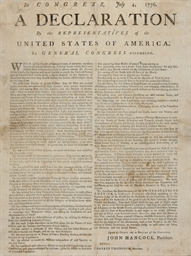
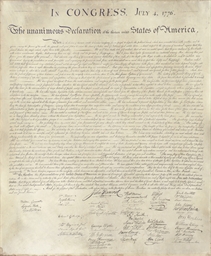
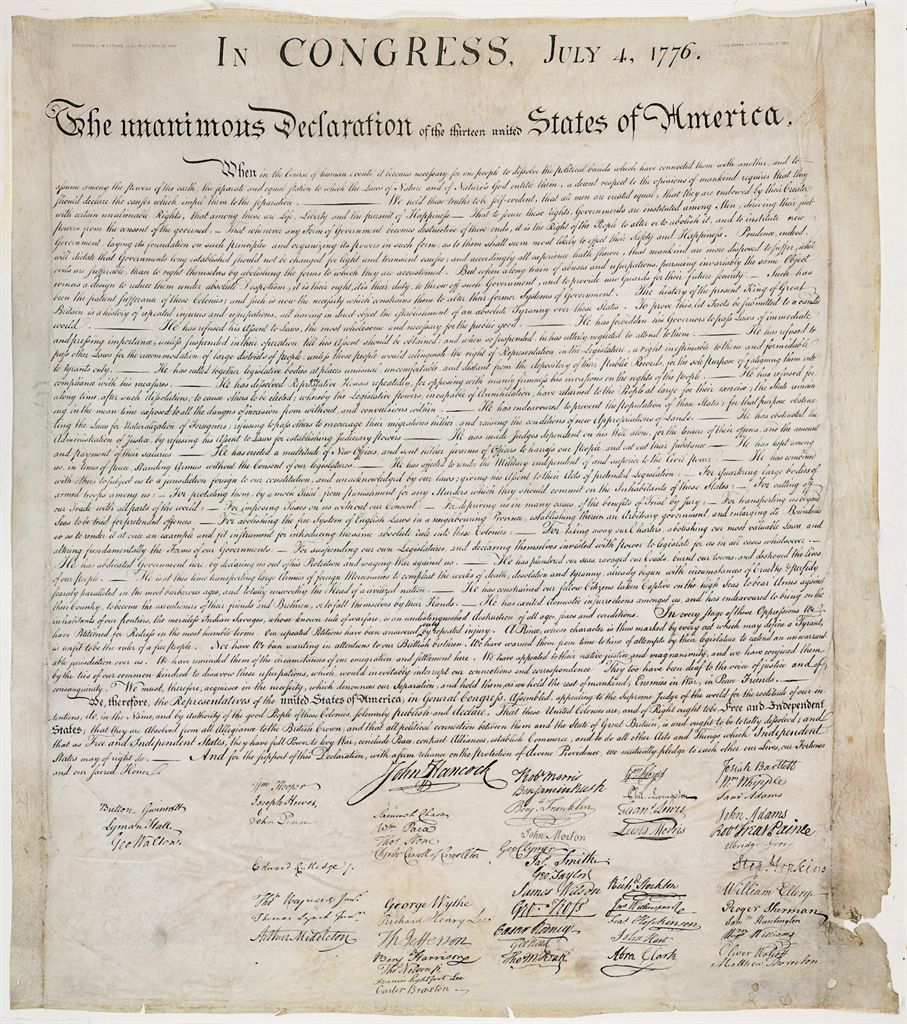
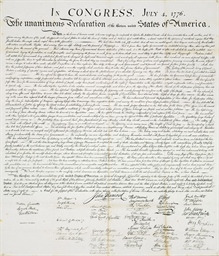
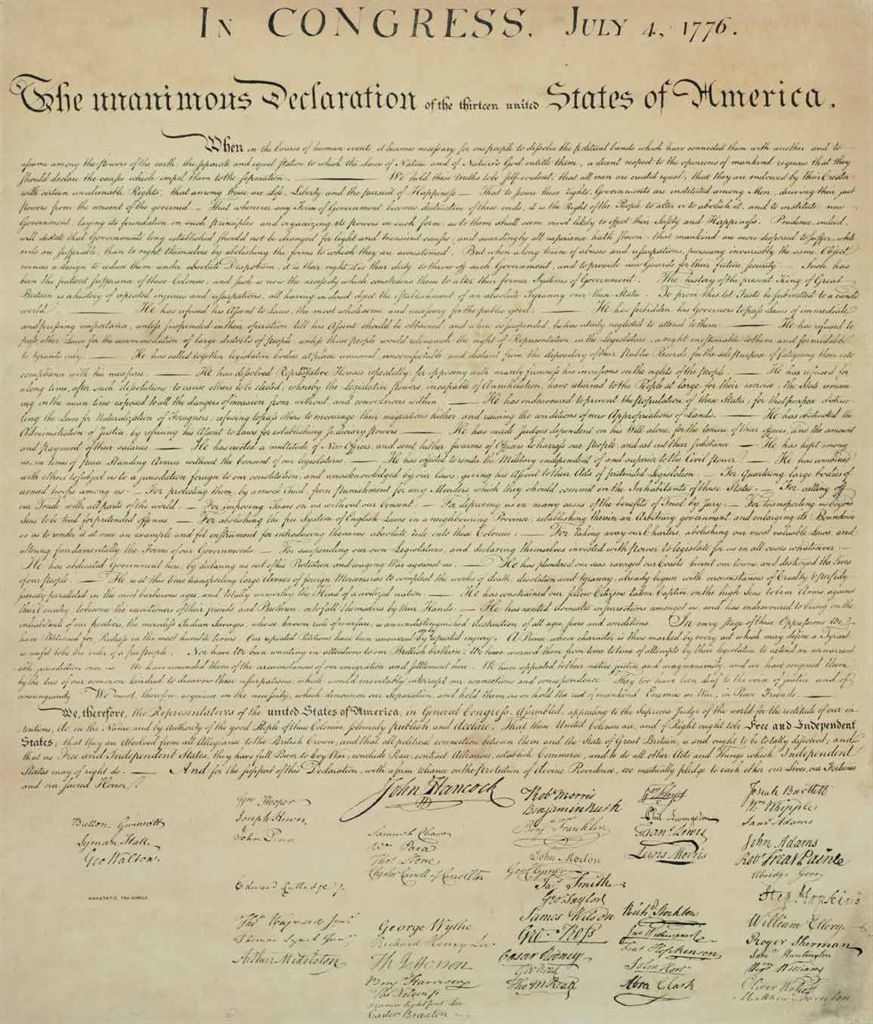
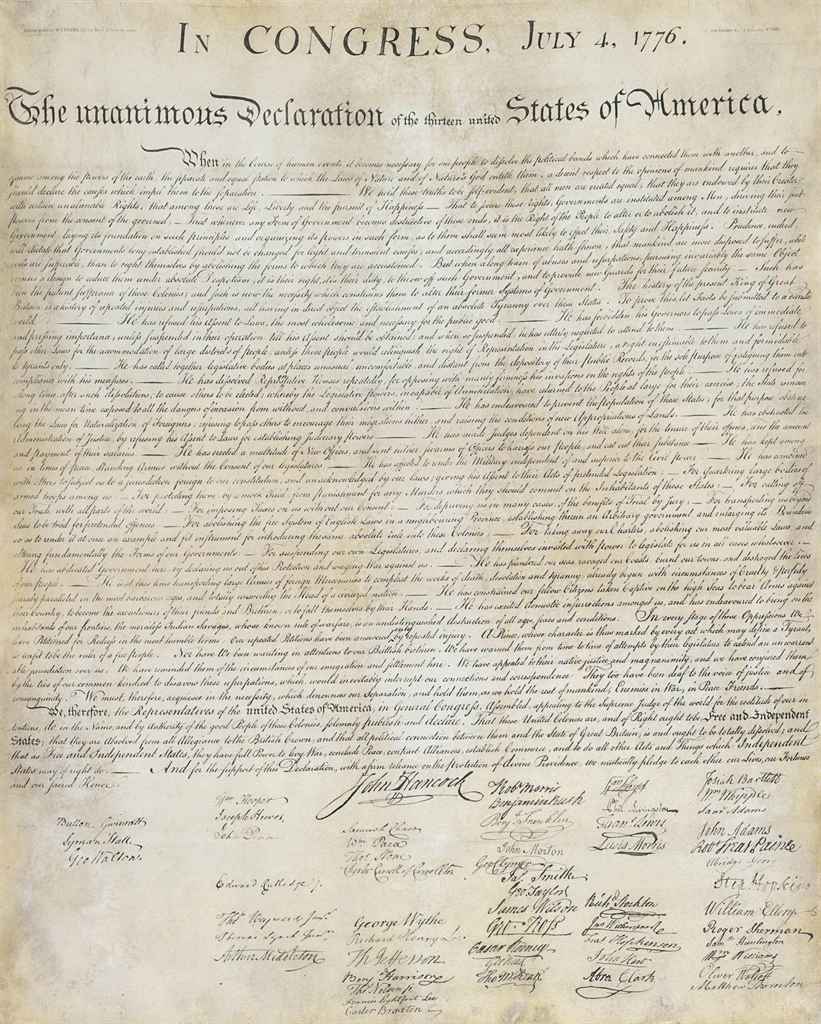
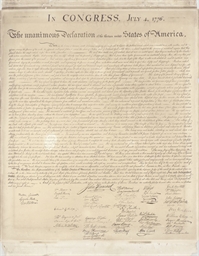
.jpg)
.jpg)
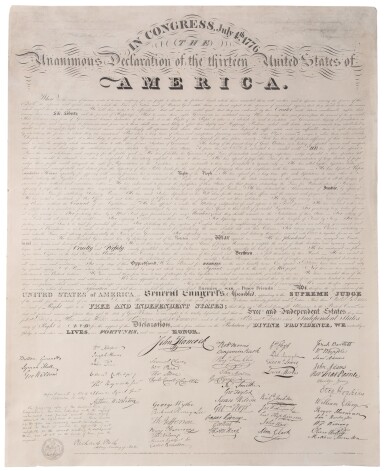

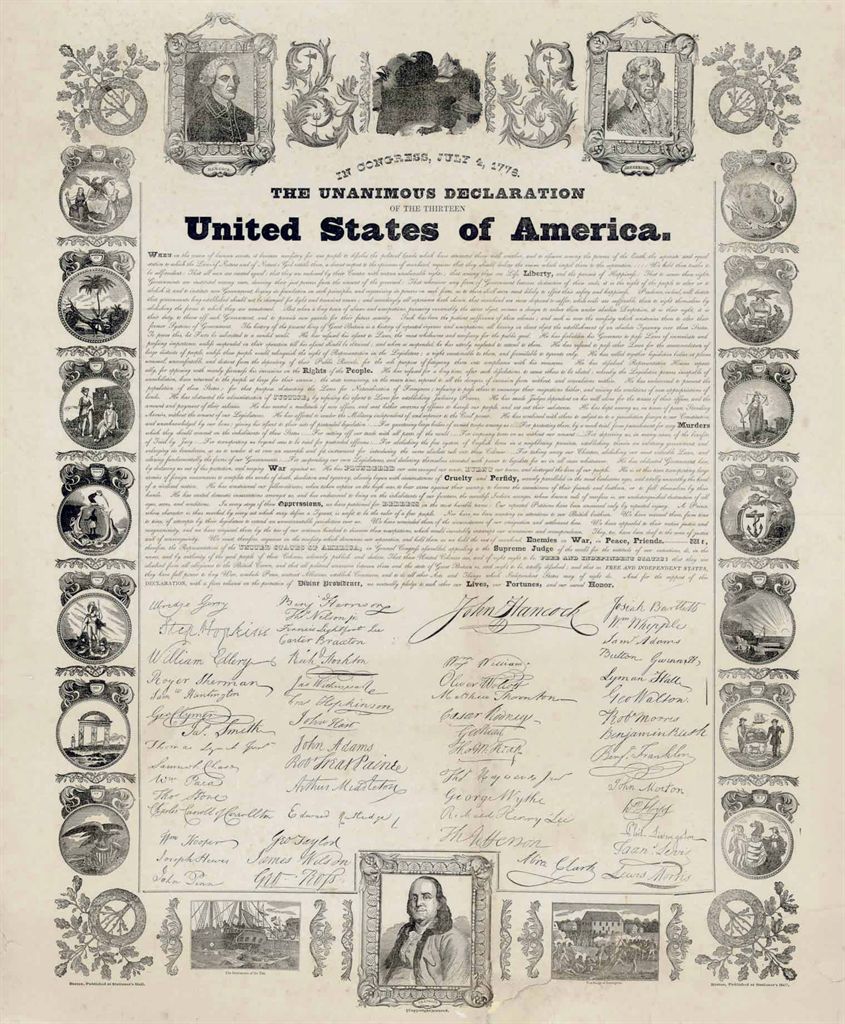
.jpg)
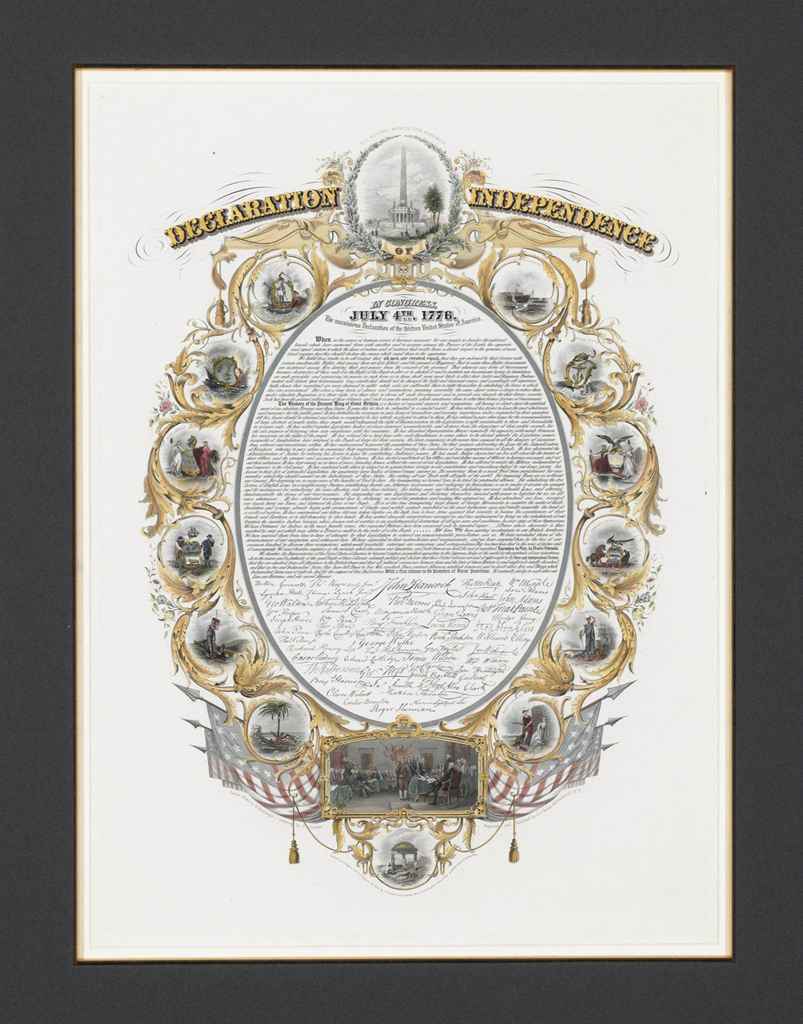

Try LotSearch and its premium features for 7 days - without any costs!
Be notified automatically about new items in upcoming auctions.
Create an alert